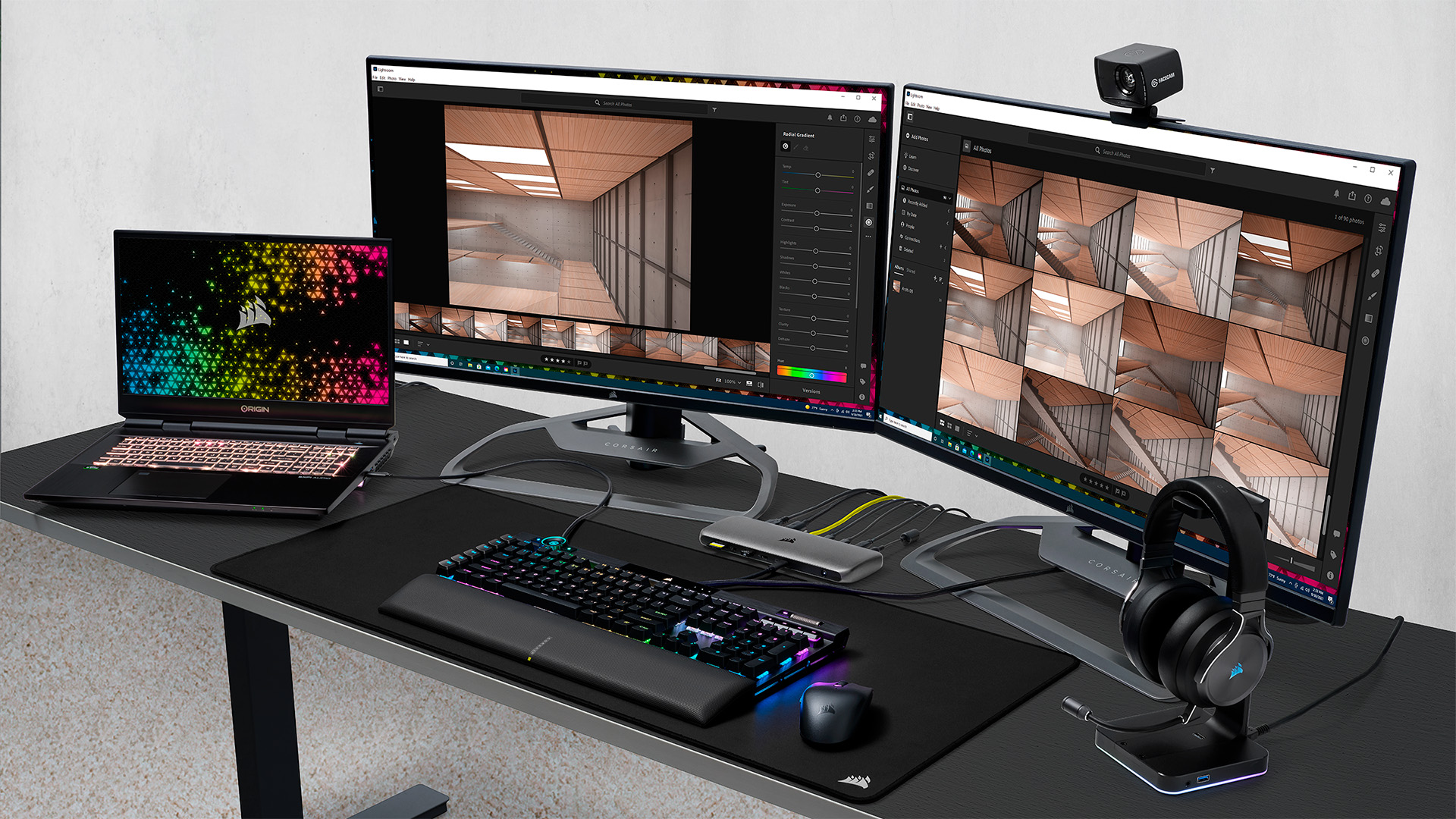In a way, you can tell it’s just a box of USB cable connectors. But a docking station like the Corsair TBT200 contains so many useful electronic devices and practical conveniences that it makes your computer life much more convenient and probably more enjoyable.
The key to this is Thunderbolt 4, which by the way isn’t Corsair’s forte. Thunderbolt is a built-in standard in newer versions of the USB port. But the dock picks up the threads, so to speak. And this is where the profit begins.
Thunderbolt lets you connect not only old-fashioned USB devices like printers, webcams, and hard drives, but also monitors to the USB-C port. Both HDMI and DisplayPort standards are built into the port.
It also means that you can most likely connect an external monitor to your laptop, even if it lacks a physical HDMI or DisplayPort output. It is only necessary to have a suitable cable.
All in one place
But let’s go back to the dock. The Corsair TBT200 is a fairly large and quite expensive variant. Something that makes it possible to collect many functions in one place.
The dock itself is a flat, elongated aluminum box with rounded edges and a strip of multi-purpose ports on the front and back.
Around back, you’ll primarily find three USB-C ports with Thunderbolt 4 support. Each port can transfer up to 40 gigabits of data per second. The ports can then be used for fast devices such as PCI Express devices and monitors. There are also two fast USB-A ports for, for example, external hard drives. Plus an Ethernet port for wired networking. It handles up to 2.5 gigabits per second. If your router or switch can keep up.
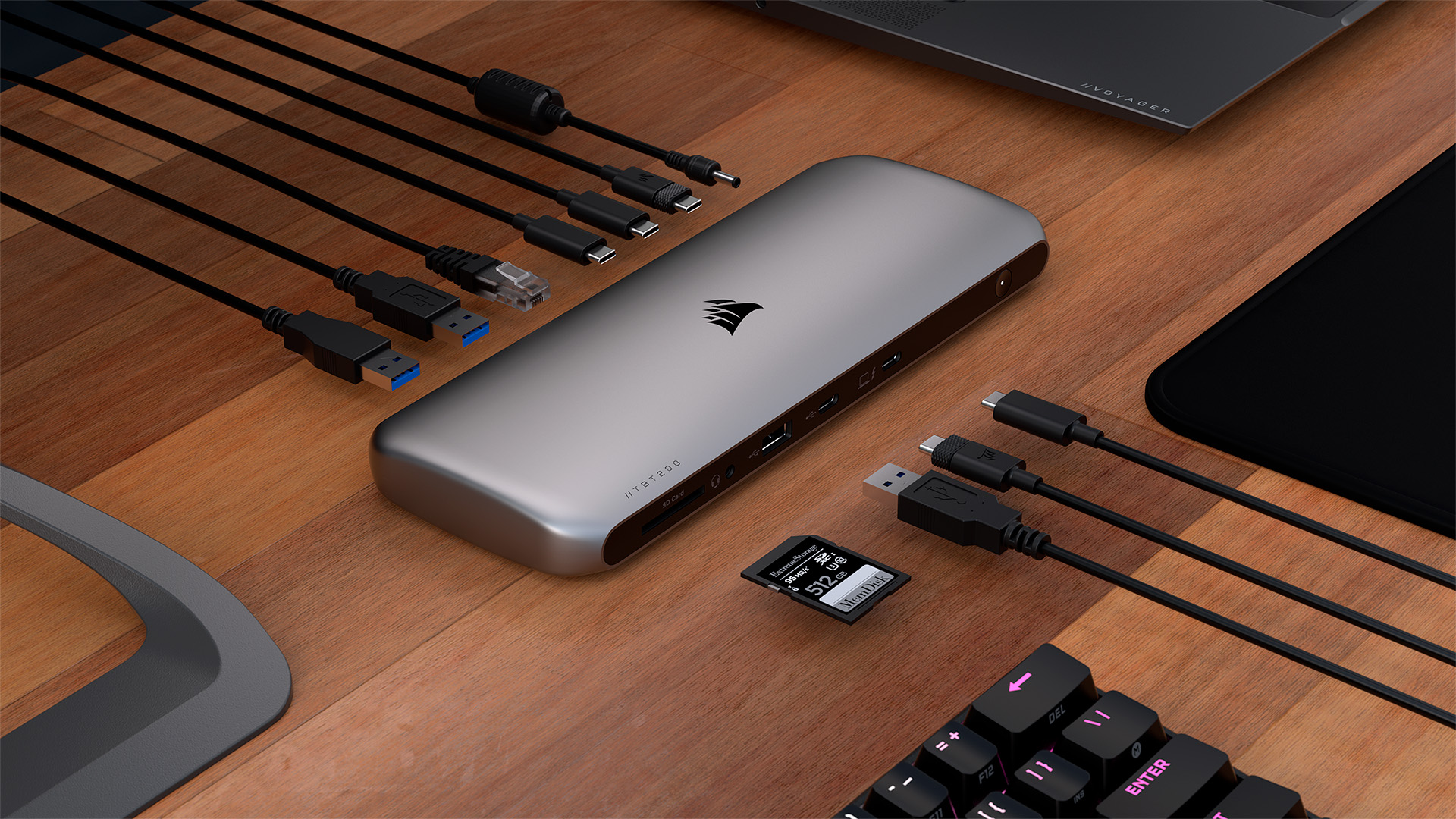
The front contains more and more diverse connections. One USB-C port and one USB-A port will likely be used for thumb drives and charging USB devices. At 15W charging on USB-C and 7.5W on USB-A, that’s not very fast, but most people still have the whole day to spare with their work computer.
There’s also an SD card reader and a combo audio out that can double as an input.
It is comfortable!
You may be wondering what to do with yet another audio output, when every laptop in the world already has a 3.5mm minijack output? It’s correct. And the Corsair TBT200 actually solves a problem that most users can already solve with built-in ports on the machine. But the dock expands the number of devices that can be connected at the same time. And above all, it makes it easy.
The most magical port of the TBT200 is the last USB-C port marked as “upstream”. Here you connect to the machine and then with a cable access everything connected to the dock. Since the dock has its own 150W power supply, you can also charge the machine with the same cable. It comes with a short and powerful USB-C cable for just that purpose.
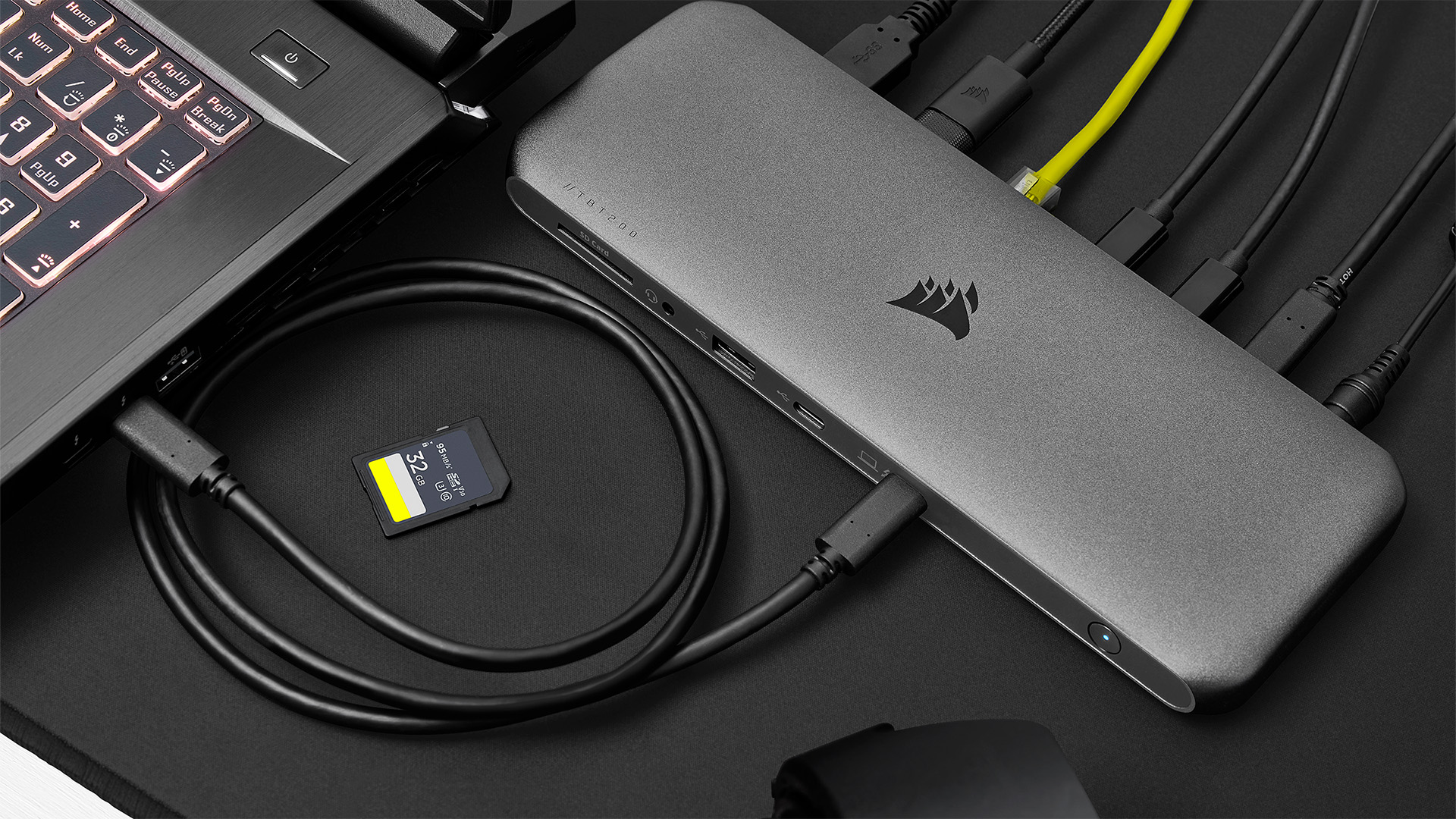
All combinations work
Also included in the box are two USB adapter cables for HDMI and DisplayPort respectively. If you need to connect two displays with the same type of connector, you can simply buy one more of the type you need. The dock (and through it, your computer) doesn’t care whether you’re using HDMI or DisplayPort, as both connection types are built into the Thunderbolt 4 standard.
And this is where it gets really magical. For a long time, I’ve been using a 27-inch 4K monitor on my desk, along with my PC’s built-in monitor. But in addition to the Word window with the article you’re working on, you also need to keep an eye on Outlook emails, internal messages from colleagues, a couple of navigation windows with information and Photoshop for image editing. Which all in all creates a screaming need for screen space!
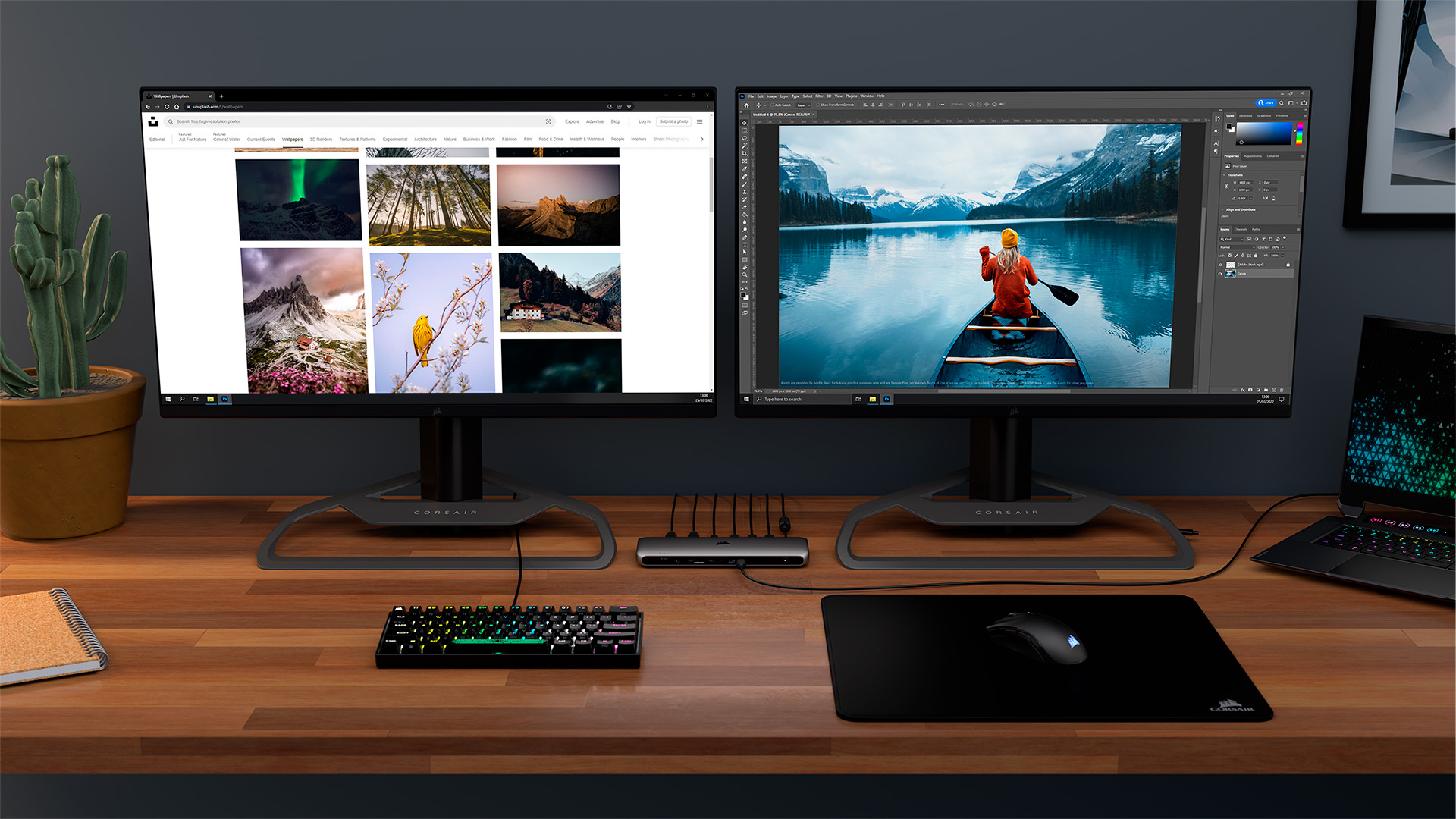
And it’s solved as easily as putting another monitor on the table and plugging a USB cable into the dock. After a few seconds, where the now three screens cycled on and off, and where the images on the screen clearly rotated as the graphics card attempted to push the lone screen up, the Windows desktop area nearly doubled. Something that cannot be said about physical desk space.
Automatic installation
No drivers or installation are required for the multi-monitor setup to work. And Windows automatically detects what resolution and refresh rate your monitors support. And that’s usually the best option. If your screens have wildly different resolutions relative to their size, however, it may be a good idea to adjust the magnification so that icons and text don’t change size as you drag a window from one screen to another.
Despite the plug and play, the adaptation is apparently not instantaneous. In the first couple of days, the screens sometimes had to be “helped” to start up if the screen was turned off during a break. It was fixed by turning the current display on and off. And the problem disappeared completely after a short break-in period, during which Windows probably updated the display drivers.
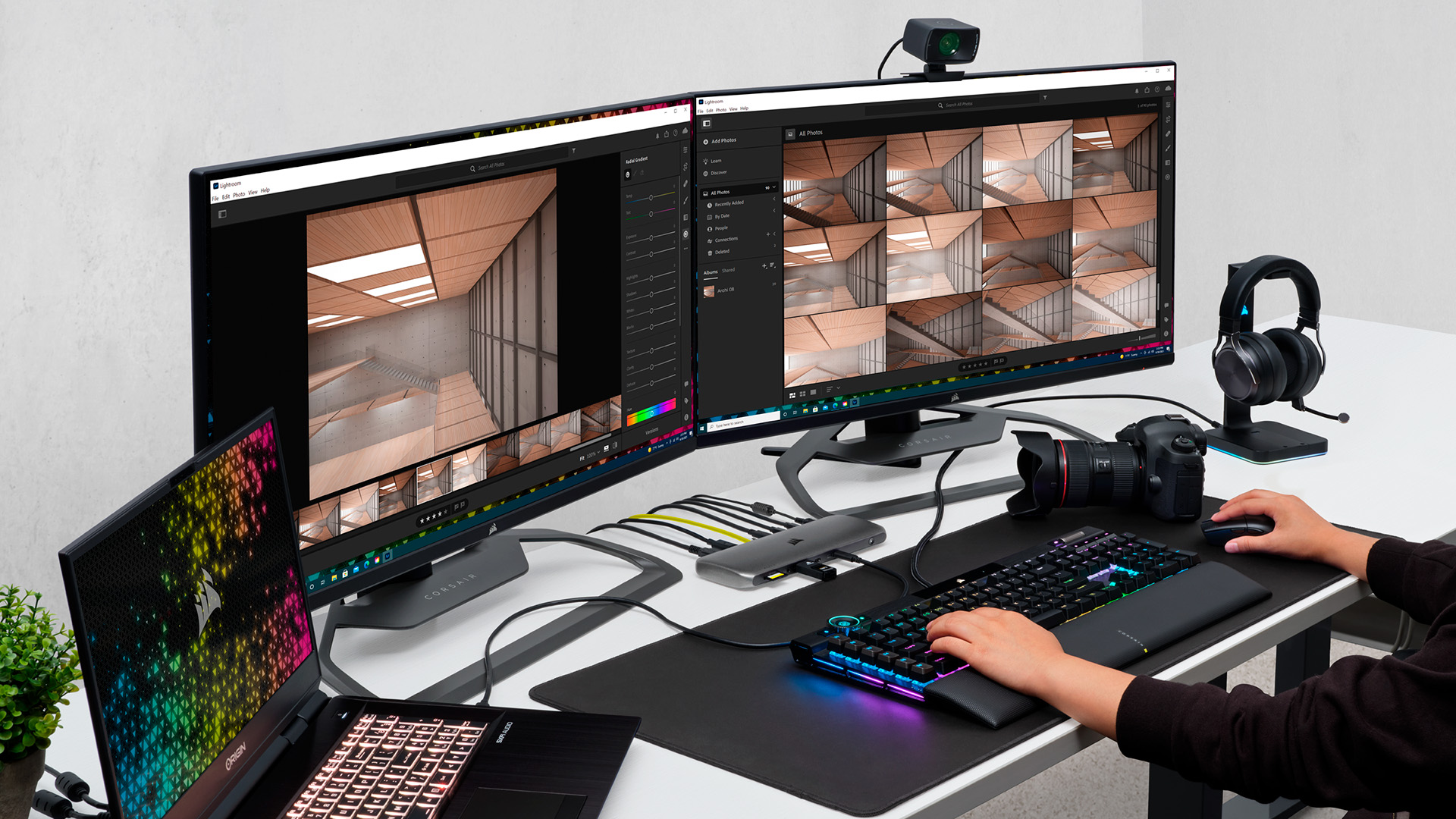
As I said, the basic functions are built into the Thunderbolt 4 standard and therefore most of the laptops (both PC and Mac) launched since 2020. And the Corsair TBT200 follows just that. However, not all docks support all screen resolutions and refresh rates. The Corsair dock allows you to simultaneously connect two monitors with 4K resolution and 60Hz refresh rate. Incidentally, the Thunderbolt 4 standard no longer supports displays via USB-C.
Note: TBT200 is currently only available through Corsair’s online store, but will be available in stores later.
Conclusion
A product like Corsair TBT200 is as desirable as it is indispensable, once you find it on your desk. It solves – mostly – any problem that can’t be solved by the “naked” laptop together with the right cables and adapters. But it makes the transition from using the machine as a super portable ultrabook to a stationary office machine much, much easier. Because instead of fiddling with cables all over the machine’s openings, I can now just plug or unplug a USB-C cable.
If you’re only going to collect a few USB devices, that’s insanely overkill. But the ability to use multiple monitors with your laptop and connect everything, including audio, to your machine with a single cable is just incredibly convenient and easy.
